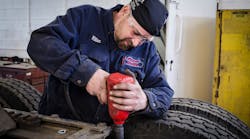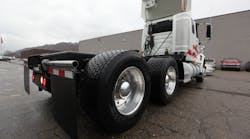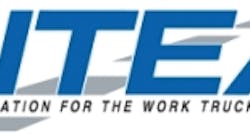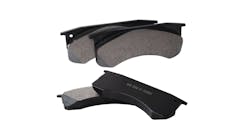As work trucks become more complex, the challenge of spec’ing vocational vehicles becomes increasingly difficult and mistakes are inevitable. Yet, says Christopher Lyon, director of fleet relations, NTEA (www.ntea.com), the effort put into this pays off in efficient specifications that can lower overall vehicle acquisition and lifecycle costs.
NTEA, the Association for the Work Truck Industry, represents more than 1,950 companies that manufacture, distribute, install, sell and repair commercial trucks, truck bodies, truck equipment, trailers and accessories.
Types of Specs
Lyon of NTEA says there are four common types of vehicle specifications that can be written:
Engineered – These include the most detail and require a high level of engineering expertise.
The writer assumes a significant amount of liability for the final product but has complete control over it, he explains. In most cases, engineered specs are used for extremely specialized, customized offerings and often result in the most expensive end product with long production times.
Functional – These describe intended equipment usage but provide minimal guidance for actual design.
While easy to write, functional specifications rely on vendors to interpret requirements and final product applications, Lyon says. This leaves little control over design and makes it difficult to standardize components on a global level.
Performance – These are similar to functional specs but incorporate specific requirements for the completed unit; for example, crane lifting capacity or maximum operating vehicle speed.
Performance specifications are easy to write and provide vendors with significant flexibility, he says. However, there is less control over final design and standardization.
Hybrid or composite – These specs combine the best features of engineered, functional and performance specifications.
The writer can fully define all requirements, as well as incorporate standard components without being excessively restrictive to vendors, notes Lyon.
The Past
Some fleets stick with what worked previously and won’t go beyond manufacturer changes from model year to model year, NTEA’s Lyon observes.
“While this might sound like a concrete idea, it can become a slippery slope and results in outdated and inefficient operations,” he says. “Take a step back and consider your current equipment functionality. Is the equipment that’s being replaced the most efficient for the task? Have job requirements shifted over time?”
He points out that change can bring opportunities to increase efficiency, so it is important to overcome the mindset of replacing equipment with comparable items.
Where to Begin?
Writing effective specifications that provide the best value for capital spent starts with defining the application, Lyons of NTEA says.
“Don’t make decisions based on what everyone else is doing or assume past needs equal current,” he warns, and offers this advice:
- Look at the operating environment, as well as drive and duty cycles.
- Identify valid functional requirements, such as payload and dimensional considerations.
- Define performance conditions, such as road speed and gradeability.
- Outline design constraints, such as operating environments, overall weight, vehicle dimensions and other regulatory barriers.
It is “critical” to design second units, such as body and auxiliary equipment, before the chassis, he emphasizes. “Avoid the pitfall of buying a chassis and making it work.
“Once all of the details are finalized, then design the chassis and write the specification.”
Seek Help
With constant changes in available alternatives and regulatory requirements, NTEA’s Lyon recommends taking advantage of resources to help optimize equipment and chassis designs. Truck equipment manufacturers, distributors, upfitters and OEM representatives can be “excellent sources when designing and spec’ing.”






